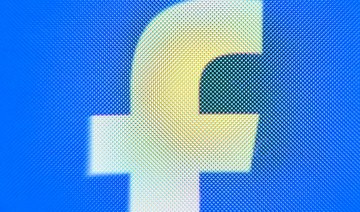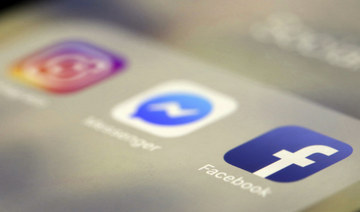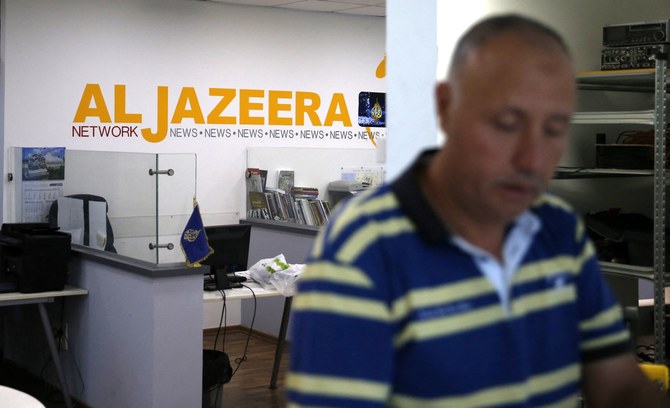DUBAI: Last month, it was revealed that many of the world’s biggest brands have been found to advertise on digital sites containing COVID-19 misinformation.
An analysis of programmatic advertising data conducted by NewsGuard and Comscore found that nearly $2.6 billion in estimated advertising revenue is being sent to publishers of misinformation and disinformation each year by programmatic advertisers.
Over 4,000 brands, including Pepsi, Starbucks, Comcast, Verizon, Marriott, and even the CDC, were found to have bought ads on websites publishing misinformation about COVID-19, according to NewsGuard.
An analysis by the Bureau of Investigative Journalism also found that brands such as Nike, Amazon and Ted Baker, have been advertising on websites spreading COVID-19 misinformation. “These ads are placed through the ‘opaque by design’ digital advertising market, which is expected to be worth more than $455 billion this year,” the report stated.
The nature of programmatic advertising is what causes ads to be placed on misinformation websites because of the lack of transparency regarding where the ad is being placed.
Money flows to sites hosting harmful content because the system of bidding on ads means these sites get mixed in with other, more benign ones, Dr. Augustine Fou, an independent ad fraud researcher and former employee of advertising agency Omnicom said in the bureau’s report.
Arab News spoke to Stewart Morrison, managing director, MEA of FirmDecisions to better understand how brands and their agencies can prevent this from happening.
Firstly, how does something like this happen wherein a brand’s ad is placed on a site containing fake news and misinformation?
“In order to understand how brands end up advertising on fake or COVID conspiracy sites, it is first worth understanding how brands buy digital advertising. There are two ways in which digital inventory can be bought:
Directly with the publisher (non-biddable) where brands negotiate either themselves or via their agency to buy advertising space directly with the publisher or their representative in a private marketplace. This accounts for about one-third of digital ad spend.
“Using a trading platform called a DSP or demand-side platform by the brand or the media-buying agency to bid for media in online auctions. These work in a similar way to stock market trading platforms — the buyer logs in, sets criteria such as target demographic, interests, device, time of day, month, budget, etc. The DSP connects to the advertising inventory exchanges (where the publishers load their inventory to be purchased) and any time a person who fits the target criteria opens a publisher’s webpage, there is an instantaneous auction and the winning bidder serves an advert to an individual’s phone or desktop browser and the publisher gets paid. The aim of this type of advertising is better targeting and cost-effectiveness.
“Naturally, the websites in the exchange need to have legitimate visitors, which can be challenging, as there are millions of sites with fake or pointless content with no real people visiting, created with the sole purpose of essentially duping the DSPs into buying ads on their pages hereby earning them money. These are mixed in with legitimate websites in ad exchanges and because of the tools used by the fraudsters, the trading platforms can find it difficult to distinguish the difference.”
How similar or different is this issue from the brand safety issue that happened a few years ago?
“Brand safety issues have been ongoing for years as fraudsters and bad actors become more sophisticated. Digital media ad fraud cost the global marketing industry an estimated $19 billion in 2018 and is expected to reach $50 billion by 2025 — that’s between 5 to 10 percent of all ad digital spend.
“In the MENA region, the digital ad spend estimate is between $1.5 and $3 billion with 30 to 50 percent of digital ads being bought programmatically, such as via an online media inventory trading platform.
“With the latter, brands have three main challenges:
“The first challenge for brands is to make sure that their adverts are served on web pages that have real visitors. Fraudsters have sophisticated teams of people who create websites and then use bots to visit the sites thousands of times to make them look legitimate and popular. The ad inventory of these sites is then made available on ad exchanges.
“Once the ads are served to a website with real visitors, the second challenge is to make sure their ads are ‘viewable.’ The Media Ratings Council considers an ad to have been ‘viewed’ if 50 percent of the pixels are in focus for 1 second or in the case of videos, 2 seconds is viewed. Additionally, advertisers also do not want their ads displayed off the bottom of the webpage where they are not seen.
“The third challenge is making sure the ads are shown in a brand-safe environment, which is to ensure the ads are not displayed alongside harmful content such as political propaganda or in this case COVID-19 conspiracy sites displaying false information that does not align with the brand’s values.”
What's the impact of such advertising on brand perception?
“If ads are to have the desired impact on their consumers and drive meaningful customer conversion, they need to appear in the right context. Research by the Audience Project shows that one-third of consumers across multiple markets believe that ads appearing in a relevant context have a positive impact on brand perception. On the other hand, most consumers say that brands appearing in non-safe environments have a negative impact on perception.
“Customers may have little understanding of the complexities of buying digital advertising, and the websites that brands use to advertise help shape customers’ perceptions. This is becoming an even larger issue now with brands considering whether even legitimate publishers align to their values on sustainability, racism, and equality before spending money with them.”
How can brands and agencies prevent this from happening?
“Developing a list of preferred target ‘white list’ sites and ‘black list’ sites is a good starting point. This helps to guide the target media purchases and steer clear of sites that are fraudulent or do not align with the brand’s values.
“The second is to audit the agencies and their media buying processes by reviewing the list of sites where the agency has spent the brand’s money and investigate. It is not uncommon during our contract compliance audits of agencies to uncover spend on sites that are defined as ‘unknown’ or ‘unpermissioned’ where we could not identify where the ads had actually run.
“Brands should deploy technical tools to ensure sites can be identified by their tags and legitimacy established.”
What are the factors brands need to keep in mind when signing programmatic media contracts with their agencies?
“Brands need to make sure they have fully transparent contracts with their media agencies identifying all the intermediaries in the digital supply chain and what they cost and ensure this is defined in their agency agreements.
“All too often we see brand-agency contracts, which are ‘non-disclosed’ where the brand just pays a fee and has no visibility on any of the intermediaries or costs. This extends beyond their media agency or the programmatic platform used — they need to know what ad verification tools are used to mitigate fraud, what exchanges ads are being bought from, what data management platforms are used, and at what cost.
“With everyone in the digital supply chain motivated by commissions or fees, they need to be held accountable if brands’ money is spent on fraudulent sites or sites that do not conform to their values.
“Many advertisers now conduct media audits to ensure full transparency and performance of their media budgets and learn where the waste is in order to make sure every dollar reaches a real customer browsing a site that reflects the brand’s values.”




























